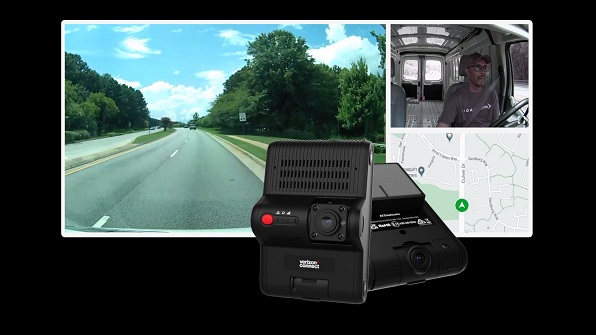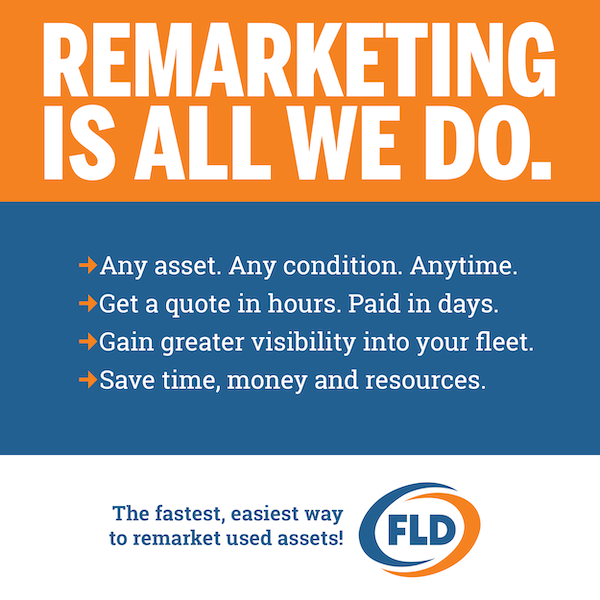
By Veronica Ng, Sr. Advisor, Product Marketing at Verizon Connect
April 25, 2023
Commercial fleets are plagued by one of the biggest challenges today – distracted driving. It poses hazards and associated cost implications. Distracted drivers are responsible for one-thousand injuries a day, according to the National Highway Traffic Safety Administration (NHTSA).
While the cost of a non-fatal injury crash is $195,258, the average cost of a fatal crash is $3,604,518, according to research from the Federal Motor Carrier Safety Administration (FMCSA). As such, mitigating the risk of distracted driving is imperative for commercial fleets looking to protect their company’s reputation and bottom line. One of the most effective mitigation tools is the combination of dashcam technology and AI.
The marriage of these technologies provides fleet managers with insight into dangerous events and high-risk driving behaviors. Armed with this enhanced intelligence, fleet managers can uphold the three key pillars of liability reduction: preventing accidents, promoting safe driving and protecting businesses.
Preventing accidents
To limit liability, prevent accidents. Today, there’s technology that can help fleet managers be more proactive on that front. Dashcams like those of Verizon Connect’s Integrated Video solution can provide businesses with visual data in near-real-time to assess risk and alert drivers of dangerous driving behaviors. Road-facing dashcams present contextual information, which includes environmental factors, such as traffic, weather, road conditions, visibility, and more.
 Driver-facing dashcams offer a view into the cab and the driver, which can reveal risky driving behaviors, such as speeding (accounts for 29% of all traffic fatalities in the United States, according to NHTSA), texting while driving, not wearing a seatbelt (over half of all driver fatalities who were speeding weren’t wearing a seatbelt, says the NHTSA), driving while fatigued, or accelerating or decelerating too quickly.
Driver-facing dashcams offer a view into the cab and the driver, which can reveal risky driving behaviors, such as speeding (accounts for 29% of all traffic fatalities in the United States, according to NHTSA), texting while driving, not wearing a seatbelt (over half of all driver fatalities who were speeding weren’t wearing a seatbelt, says the NHTSA), driving while fatigued, or accelerating or decelerating too quickly.
AI-powered data can detect these risky behaviors, assess risk level, and alert both drivers and fleet managers about behaviors that need correction and conditions that require extra vigilance.
Promoting safe driving
Responding to real-time dangers is critical, but defending against liability should begin long before these high-risk events. Promoting safe driving begins with culture, which is reinforced with training and can be strengthened with AI-powered solutions.
Creating a safety-first culture begins by identifying behaviors to be avoided. In addition to those mentioned above, risky behavior includes tailgating, running red lights or stop signs, cutting off other drivers, or weaving in and out of traffic. A safety culture should also promote good behaviors, such as environmental awareness, limiting in-cab distractions, and obeying all traffic laws.
Fleet managers can tap smart solutions to create driver report cards that measure key safety statistics. They highlight strengths, weaknesses, and tendencies, which can then be used to incentivize drivers and reinforce a culture of safety.
Protecting businesses
Preventing accidents and promoting a culture of safety serve to protect businesses from liability. So does documentation. Capturing in-cab visuals of the driver can assess a company’s exposure to liability due to distracted driving by ascertaining whether the driver was engaging in any behaviors that might cause distraction.
 The presence of AI-powered solutions provides another layer of documentation, since they will alert fleet managers and drivers about imminent threats. If fleet managers and drivers both respond to those alerts according to protocol, it only strengthens the case for no liability.
The presence of AI-powered solutions provides another layer of documentation, since they will alert fleet managers and drivers about imminent threats. If fleet managers and drivers both respond to those alerts according to protocol, it only strengthens the case for no liability.
The Best Ability is Accountability
Negligence determines liability. If negligence is not established, liability cannot be proved. Visual documentation can serve as proof of the absence of such negligence, but smart solutions strengthen the case by accomplishing two main objectives: preventing situations that lead to liability, and providing context that supports visual documentation.
As illustrated above, AI solutions like intelligent AI dashcam video solutions can help thwart imminent threats by providing smart, real-time alerts, and they can make drivers safer. Additionally, they create context by establishing a driver’s safety profile as well as ascertaining the threat level of a given situation.
Reduction of liability is achieved through an increase in accountability. Smart solutions promote such accountability through the delivery of systemic safety and intelligent transparency.




